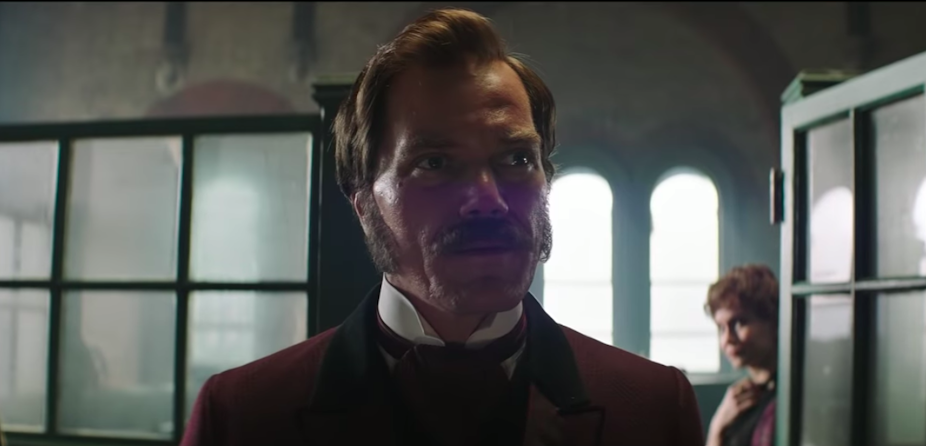The history of electricity, as many narratives about spectacular inventions told in popular culture, is a story dominated by men. The Current War, the new film that charts the ruthless competition between Thomas Edison and George Westinghouse in the 19th century to be the first man to bring electricity to the masses, falls into the same Hollywood trap. Directed by Alfonso Gomez-Rejon and produced by Martin Scorsese, Benedict Cumberbatch and Michael Shannon play Edison and Westinghouse, while Nicolas Hoult stars as Nikola Tesla.
When we saw the film trailer we both greeted the film’s male-centered premise with a certain amount of eye-rolling. We have been working as part of an international network to reframe the history of electricity away from just heroic manly tales, and to highlight the role of women in promoting electrical energy. While men may have been the most visible “inventors” of the new technology, many relied heavily on women to persuade people to “allow” electricity into their home by domesticating it into a safe and elegant illuminant. Our aim is to write these women back in.
The invisible force of electricity was terrifying to many in the 19th century. There were reports of death by electric shock, circulated with glee by the gas companies, who were keen to see off any new competition. And as we showed in the recent BBC Four documentary, Victorian Sensations, women found themselves unconvinced that either their faces or their homes benefited from being illuminated by the powerful glare of electricity.

Convincing women
This is why women were needed to “sell” the benefits of the new technology to women. As they increasingly became the definitive household managers and arbiters of household taste in the 1880s, they took on a key role in purchasing lighting equipment and commissioning designs for their homes.
The last quarter of the 19th century saw the popularisation of the idea that domestic décor was an expression of a woman’s personal character, linked to the concept of the home as a reflection of and influence on a person’s morality, as well as the importance of cleanliness. Guidebooks suggested that interior design was a public reflection of a woman’s personal taste; as such, the fear of “getting it wrong” opened up an opportunity for the development of professional decorators to assist and help avoid faux pas. While at first, the majority of these “experts” were men, it soon became clear that women were influential in the privacy of the home, and would respond well to being guided by professional women.
And yet the role of women in the journey of the move to electricity remains hidden. Our work draws on examples of women active as electrical engineer’s spouses. These collaborative women were indispensable to the process of electrification, but were written out of history by male-centered engineering heroism.

Among such professional women were the spouses of electrical engineers, such as Alice Brandreth, better known under her married name as Mrs J.E.H. Gordon. Following the introduction of indoor incandescent lighting in the 1880s by Swan, a Briton, and Edison, an American, Gordon’s Decorative Electricity of 1891 was essential reading for women wondering whether to electrify their homes. Gordon was also a capable engineer in partnership with her spouse James Gordon.

We also looked at one of the early professional women decorators, Mary Eliza Haweis. In The Art of Decoration, she produced one of the earliest examples of a woman advising women on electric lighting in England.
Given its publication in 1881, at the very earliest period of electrification, and only a year after William Armstrong first lit up the Victorian house of Cragside using Joseph Swan’s lightbulbs, it’s unsurprising that Haweis starts her chapter on lighting with the statement: “Until the electric light is more manageable than is now is, there are two ways of lighting rooms – gas or lamps and candles.”
By 1900, efficient lighting still remained a luxury in the UK and so Haweis and Gordon’s popular messages remained as projects of glamorisation for a while longer. Indeed the UK’s Women’s Engineering Society was co-founded by seven eminent women, mostly “engineers-by-marriage”, exactly 100 years ago in 1919 – this centenary is an important moment to reflect on the importance of these truly electrifying women.
As Canadian historian Ruth Sandwell reminds us, we have a rich and growing analysis of men’s inventions, men’s labour, and men’s planning and development of systems for financing, organising, selling, running, repairing, and maintaining the new networks of power, particularly electricity, oil, and gas.
Yet despite the energy of the movement to better recognise women’s achievements today, we find current histories have left little room for recapturing or theorising women’s energetic relationships with their kin, environments, or society, nor have they set out how these changed over time.
So while it is great to see the history of electricity having a light shone upon it by Hollywood – as ever it would be better if the histories of women as well as men were told.

